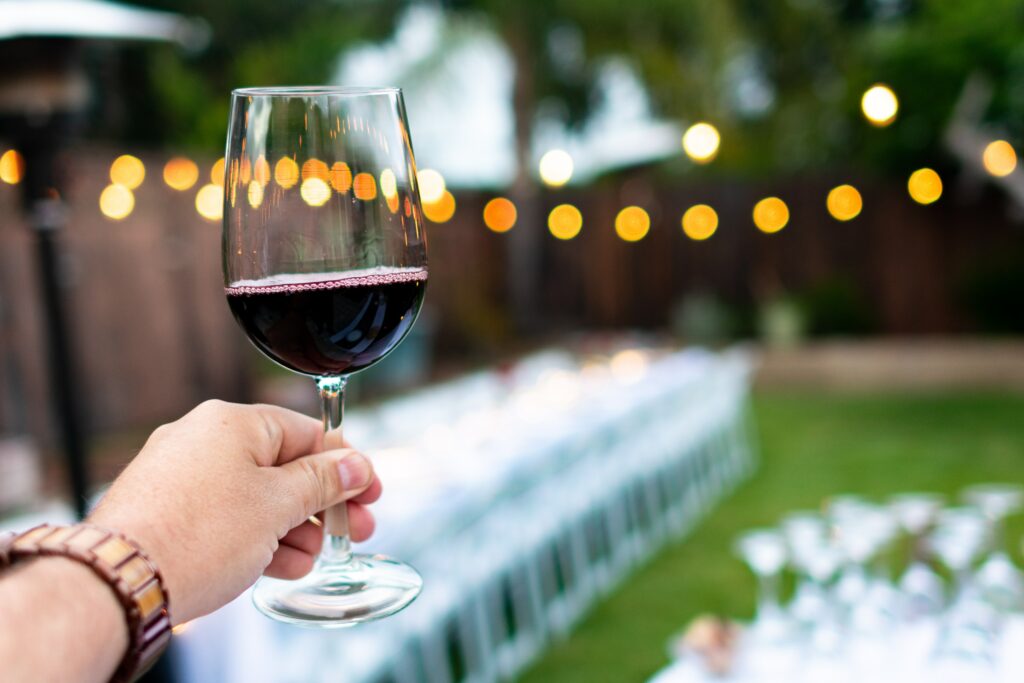The incredible thing about wine is just how different one bottle can be from another. Even if you always purchase the same wine, there will always be subtle differences in smell, taste, texture and colour. Even your average tipple can have enjoyable elements but when you delve into the world of fine wine, that’s when things get really interesting. Whatever your budget and taste, we will share with you what wine colour can tell you and open up a whole new wine tasting experience to you.
What wine colours are there?
This is a difficult question to answer. There is an array of wine colours, from lemon-green to salmon and tawny to purple, and each one tells a story. The wine colour alone can provide an immense amount of information that will tell you how the best wine is likely to taste, its age, the character and perhaps even the rejoin it was produced. Knowing about the colours of wine will enhance your wine tasting experience.
What does the colour depth say about the wine?
The depth of colour will inform you about the style and body of the wine. The body refers to the weight of the wine on the palate and how it feels in the mouth, whether heavy or light. The bodies of wine are comprised of full, medium and light. If the colour is rich and deep, the wine will tend to be full-bodied.
A delightful young bottle of Beaujolais wine is generally made from the Gamay Noir grape variety and is fresh and fruity. The Beaujolais wine is considered to be light-bodied because it has low tannins, is lighter in alcohol and is generally drunk early. This wine would have a purple or magenta tint because of its youthfulness. In contrast, the deep red colour of Cabernet Sauvignon makes it a full-bodied red wine.
White wines follow the same process. Take a fine Riesling, it’s fresh and light in body, compared to a Chardonnay which is much bolder, golden and full-bodied.
In the production of red wine, whole grapes are crushed and fermented, including skins, which transfers the tannins from the fruit into the wine with the colour. The thinner the grape skin, the lighter the tannins. If red wine is deep in colour, it will have been produced from a thick-skinned black grape that will feel rich in the mouth and leave a tannic coating.
Red Wine Colours
Red wine colours are classified as tawny, garnet, purple and ruby. Ruby and purple tend to be the younger wines, but ruby often has more intensity and berry fruit taste on the palate, often with a hint of spice.
Tawny and garnet wine colours tend to have colours associated with autumn because of age, increasing the flavour complexity. These wines tend to improve over time and soften in acidity and intensity. Because of the ageing process, these wines tend to have a more complex flavour spectrum ranging from fruity to smoky, savoury, woody with spice. A wine brown in colour suggests it has been aged in oak for a considerable time. Port is an excellent example of this, which has soft tannins making it creamy and smooth to drink.
You don’t have to purchase the most expensive red wines in the world to be able to learn about wine colour but investing in a good bottle of wine will certainly be worth it.
Rosé Wine Colours
Rosé wine is just as complex in colour and flavour as red and white wine. Rosé wine is described as Rosé, pink or blush and tends to be sweet, dry or somewhere in between. Deep pink rosé wine is likely to be very fruity with hints of strawberries and summer on the palate. A lighter salmon pink wine is likely to have hints of berries, with peaches, melon and floral notes coming through. Generally speaking, the deeper the pink, the sweeter the wine and the light the wine colour, the crisper and drier it will tend to be.
White Wine Colours
White wine colours can be a little more challenging, but pale coloured wines are younger, light in body and have lemon and green hues as a general rule. They will have fruity, zesty, floral notes with high acidity, and the younger, crisp wines are best enjoyed early and ice cold.
An aged white wine deepens the colour, making it appear more golden, making it smoother on the palate and creating notes of cream, honey, and toast. Amber coloured wines such as sherry have this colour due to being aged in oak casks for an extended period which gives it a brown hue. Amber wines tend to have notes of vanilla, nuts and toffee. Dessert wines are silky and sweet with golden hues and notes of tropical flowers and fruits. Dessert wines are produced from grapes that have been allowed to ripen over a more extended period.
There you have it, the basics of wine colours to help provide a deeper insight into the glorious colours of wine and help you better choose, taste and enjoy wine.
Now you know about the colours of wine, discover about wine and comfort food pairings for your next dinner party.







